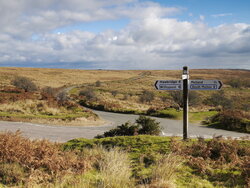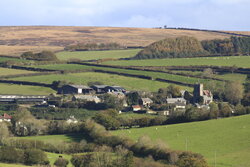The Molland Estate
The Early History
During the Saxon period, it was probable that Molland consisted of two main settlements with a scattering of smaller farms in the surrounding area. The Domesday Survey identified these settlements as Molland Bottreaux and Molland Champson.
King William took the manor of Molland (Bottreaux) from Earl Harold in 1066 and gave it to the de Beumis Family in return for 1 knight's fee. This tenure was a military service to the Crown consisting of a full armed knight and his servants for 40 days a year. It later became commuted to a monetary payment.
In 1210 a William de Boterell purchase the manor and it passed through this family by inheritance. Their name gradually changed to Botreaux.
The manor house is thought to have been sited at West Park, where remains of Norman fortificatons have been found.
In 1285, a William de Botreaux was granted the right of free warren in his demesne lame in Molland in Devon. This right allowed the lord of the manor to hunt for beasts of the chase (except deer which were the privilege of the king) within his own lands.
This right was often formalised by the creation of deer parks. Bottreaux Park originally surrounded the medieval manor house at West Park, the boundaries extending west to Bottreaux Mill and north to New Park. No evidence of the park can be found today.
The other settlement at Molland was, in 1086, part of the extensive lands of Geoffrey de Mowbray, Bishop of Coutances. In 1166 it was occupied by Roger de Campellis or Champeaux. Thus it became know as Molland Champson. The manor eventually passed to the Culme Family in the sixteenth century.
The Courtenays of Molland
Sir Philip passed Molland Bottreaux to his son Philip who became Sir Philip Courtenay of Molland. Whether the manor house had fallen into disrepair or the demesne lands had become stale, Sir Philip decided to move and built a manor house at the small settlement of West Molland. The present house, fishponds and demesne farm date from the late 1400s. The Courtenay coat of arms can be seen over the main house door.
The Courtenays of Molland resided there for nearly three centuries. In 1700 John Courtenay purchased Molland Champson from Sir Edward Hungerford and the two manors descended into the same ownership.
The Throckmortons
In 1732 John Courtenay died without an heir and his lands passed to his sisters, Mary who married William Peston of Horton and Elizabeth who married John Chichester of Arlington. Mary's daughter Anna Maria then married George Throckmorton who took the name Courtenay. Molland has remained in the Throckmorton family ever since.

